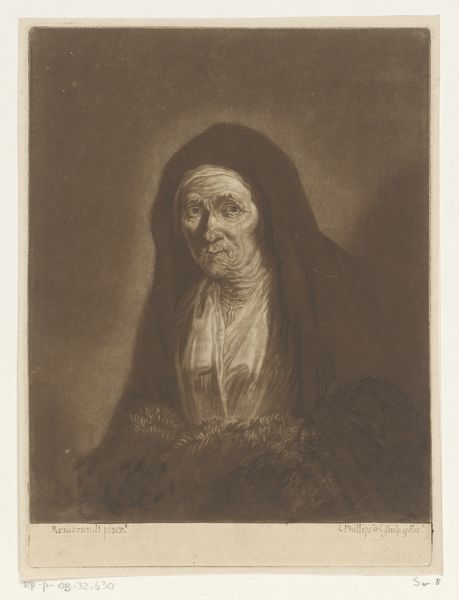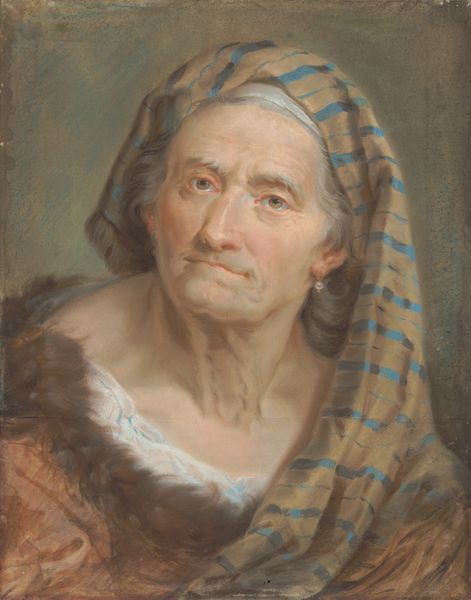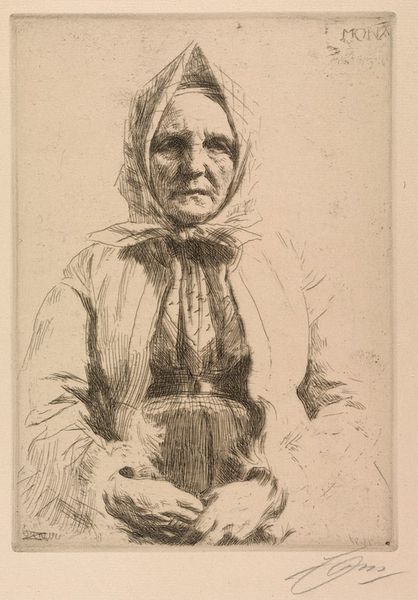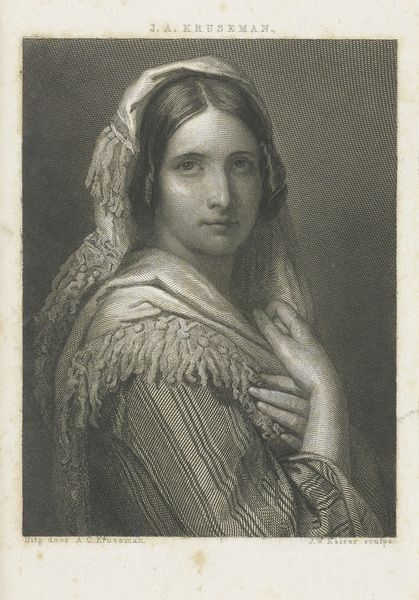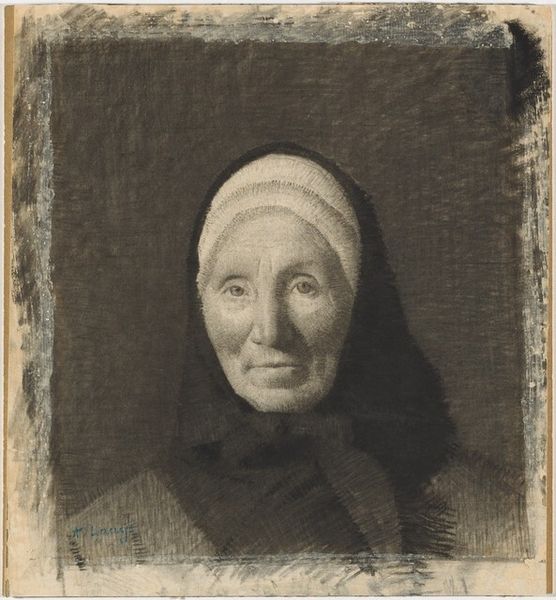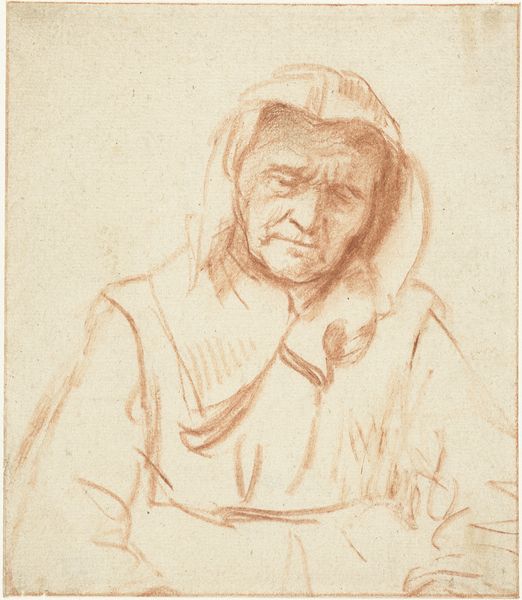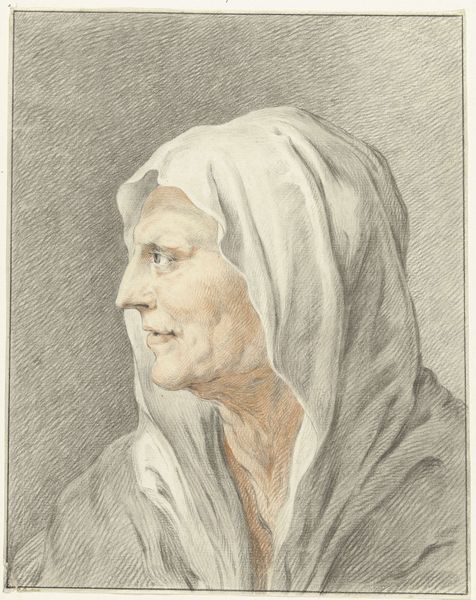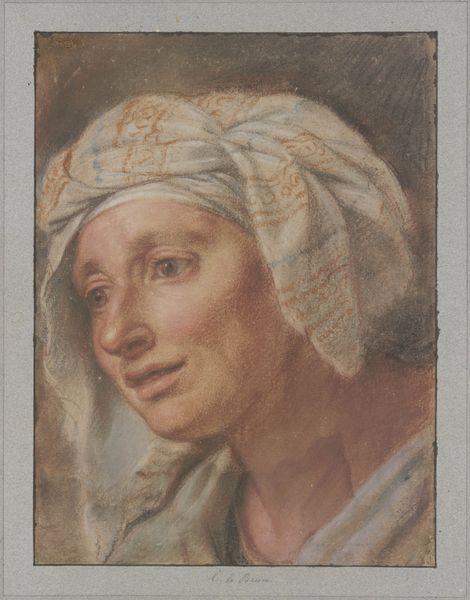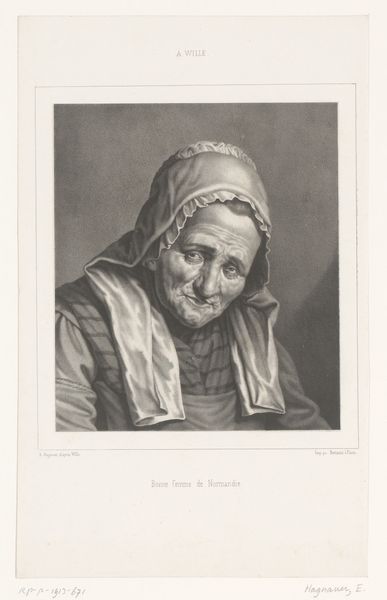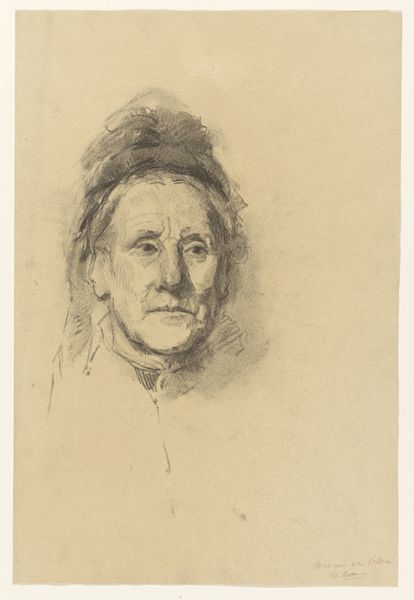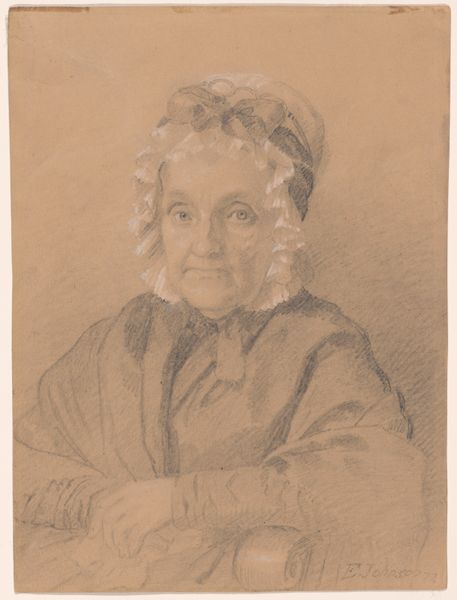
drawing, charcoal
#
portrait
#
drawing
#
charcoal drawing
#
charcoal art
#
portrait reference
#
pencil drawing
#
portrait head and shoulder
#
france
#
animal drawing portrait
#
portrait drawing
#
charcoal
#
facial portrait
#
academic-art
#
portrait art
#
fine art portrait
#
realism
Dimensions: 16 3/16 × 13 5/16 in. (41.1 × 33.8 cm)
Copyright: Public Domain
Editor: Here we have Léon Lhermitte's "Head of a Peasant Woman," created in 1874 using charcoal. There’s a striking sense of melancholy in her gaze. What historical narratives might this piece be speaking to? Curator: Precisely. Her upward gaze seems to search for something beyond the immediate. Consider the socio-political landscape of 19th-century France. The rapid industrialization led to significant rural exodus and displacement, dramatically altering traditional ways of life. Does her expression, rendered with such subtle shading, speak to that sense of loss and yearning? How does Lhermitte frame the figure and portray the effects of rural transformation on women's identities? Editor: So, you're suggesting this portrait is less about an individual and more about a collective experience? Curator: I propose that the woman, whilst individualized through skillful depiction, embodies the collective plight of rural women facing societal upheaval. Notice the careful detailing of her modest clothing, the shawl and bonnet. What might those garments represent? Could this drawing also subtly critique the idealised romanticism of rural life prevalent at the time? Editor: I see. Perhaps a counter-narrative to the idealized peasant portraits we often encounter? Curator: Exactly. It prompts us to question who is seen, who is heard, and whose experiences are valorized. The charcoal medium itself – so humble – emphasizes this grounded, unvarnished portrayal of working-class womanhood. Editor: It's made me think differently about portraiture altogether. I assumed it was mostly about status, wealth, and power but this evokes such a contrast. Curator: Precisely! Art acts as a lens through which we can examine societal shifts, power dynamics and question the historical narratives handed down to us. Editor: Thank you. I'll definitely be considering the context in which portraits were created from now on.
Comments
minneapolisinstituteofart almost 2 years ago
⋮
Léon-Augustin Lhermitte’s sympathetic and informed portrayals of country life proved popular with Parisian audiences. In this accomplished study, we see him treating his humble subject with the same dignity and intense scrutiny that other artists devoted to paying sitters. The woman’s careworn face reveals inner strength even as her averted eyes suggest world-weary preoccupations. Lhermitte has captured the loose fleshiness of her neck, the hair that refuses to be contained by her bonnet. He took full advantage of the rough texture of his paper, sometimes letting it keep the full load of pigment from the tip of his charcoal, sometimes smoothing over the texture by gently smearing his marks.
Join the conversation
Join millions of artists and users on Artera today and experience the ultimate creative platform.
